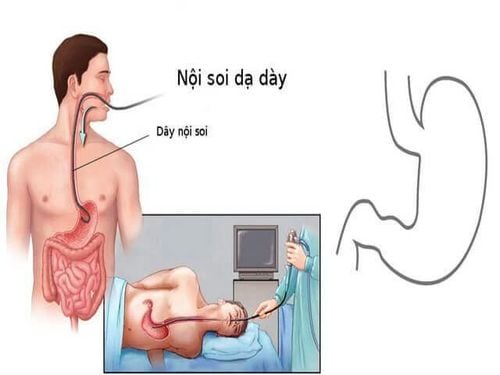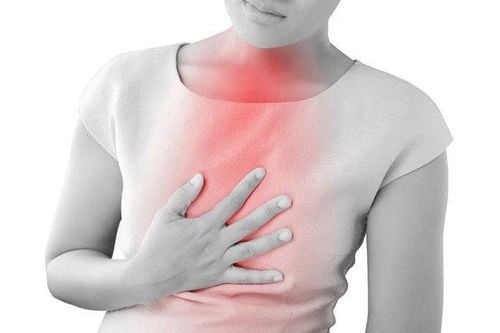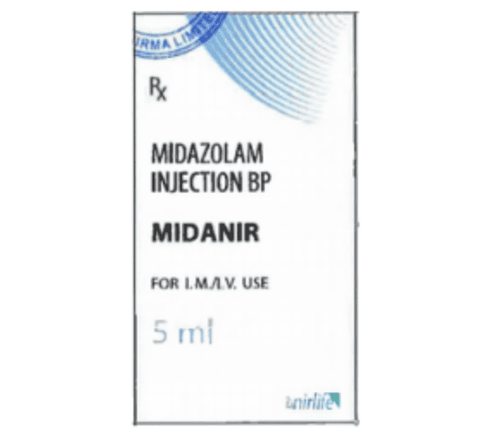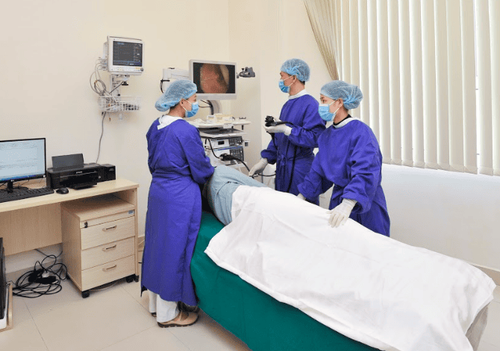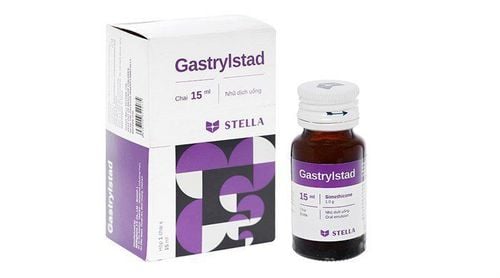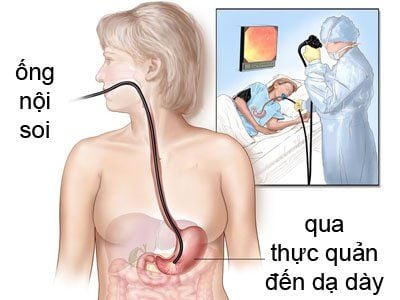This is an automatically translated article.
The article is expertly consulted by MSc Vu Huy Binh - Department of Medical Examination & Internal Medicine, Vinmec Hai Phong International General Hospital.Gastroscopy is a safe and effective method to help diagnose and treat gastric diseases. However, many patients, because they do not fully understand the endoscopic methods, are still quite hesitant when being assigned to perform this procedure.
1. What is gastroscopy?
Gastroscopy is the use of a flexible endoscope to view the esophagus, stomach, duodenum, and duodenum. The doctor can use special instruments to remove foreign bodies or remove polyps, stop bleeding, treat esophageal varices, varicose veins, gastric aneurysms, dilate atrophic or narrowed parts,...Internal scanning is a safe method. Complications may include mucosal abrasions, infection, bleeding, uncooperative tear-perforation, or pre-existing obliteration, but complications mainly occur when the patient is uncoordinated, while other complications occur. Diagnostic endoscopic procedures very rarely cause complications.
2. What are the methods of gastroscopy?
Currently, gastroscopy can be done through the mouth or nose, and the patient can choose between anesthesia (painless endoscopy) or no anesthesia. Each method has its own advantages and disadvantages and is indicated in each specific case.2.1. Gastroscopy through the mouth
This is the most commonly used traditional endoscopic method today.Advantages: Easy to perform, high accuracy (if the patient cooperates well), low cost. Cons: Gastroscopy with a large diameter flexible tube, when passed through the mouth, will stimulate the uvula, palate, and bottom of the tongue, making the patient nauseous, uncomfortable, causing a feeling of fear during endoscopy. (In some cases, due to nausea and vomiting, there may be sore throat, sore throat after endoscopy).
2.2. Endoscopy of the stomach through the nose
Nasopharyngeal-gastroduodenal endoscopy is the introduction of a gastrososcope through the nose into the esophagus and then down to the stomach, duodenum and duodenum for the purpose of diagnosing diseases of the esophagus, stomach, duodenum and duodenum.Advantages: Easy to implement, high accuracy. The bronchoscope has a small diameter (about 5.9 mm in diameter) and passes through the nasal passage, not touching the uvula and pharynx, so it causes less nausea and less discomfort for the patient. Cons: This method cannot be performed if the patient has a pathology of the nose area, narrowing of the nasal passage; Cost is higher than oral endoscopy. When detecting a pathology requiring intervention, such as removing foreign bodies, cutting polyps, hemostasis, oesophageal varices, sclerotherapy, dilation, etc., it cannot be done immediately and must be switched to oral endoscopy.
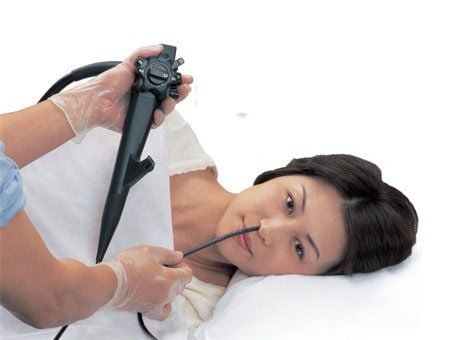
2.3. Gastroscopy with anesthesia - painless
In cases where the patient is afraid or requires pain relief during the endoscopy, the doctor can perform endoscopic methods of gastroscopy under anesthesia.Anesthesia - gastroduodenal endoscopy is the introduction of a gastroscopy through the mouth into the esophagus and then down to the stomach, duodenum and duodenum for the purpose of diagnosing and treating diseases of the esophagus, stomach, duodenum and duodenum when the patient is in a state of anesthesia.
Advantages: Because of the anesthesia, the patient will not feel uncomfortable, nauseated during the endoscopy, will not be haunted after the endoscopy, and especially there will be no dangerous actions such as pulling the bronchoscope or struggling. The anesthetic time is short, the amount of anesthetic is small, so the patient wakes up quickly after the endoscopy (2-3 minutes after the endoscopy), which does not affect the patient's health much. Because the patient is anesthetized during endoscopy, the doctor can perform interventional procedures such as: removing foreign bodies, cutting polyps, hemostasis of ulcers, sclerotherapy, dilating, esophageal vein ligation, etc. and safer. Cons: More expensive than conventional endoscopy. Complicated implementation, need more anesthesiologist, may have to do some more tests as well as electrocardiogram. Some patients after waking up are still tired, sleepy due to anesthesia, need to check the drug and monitor the side effects of the anesthetic.
Please dial HOTLINE for more information or register for an appointment HERE. Download MyVinmec app to make appointments faster and to manage your bookings easily.





